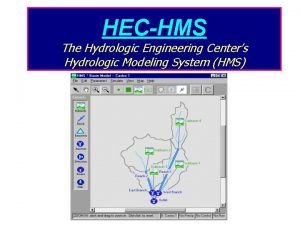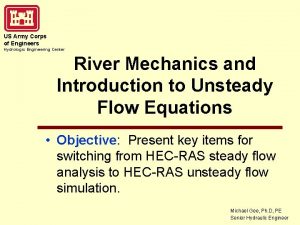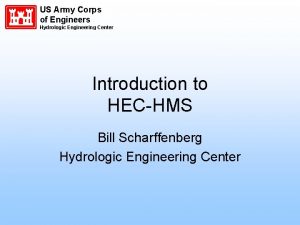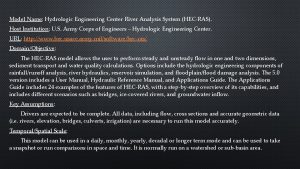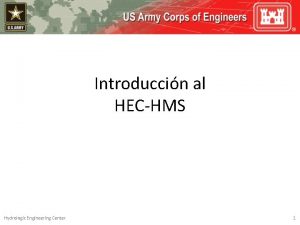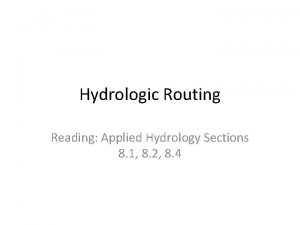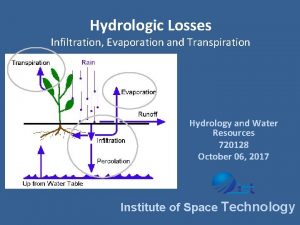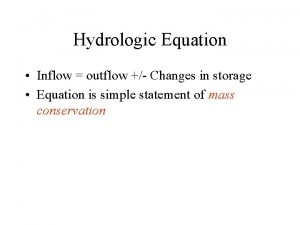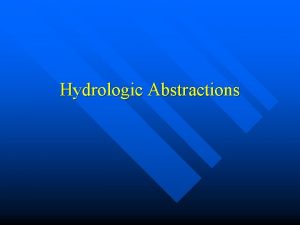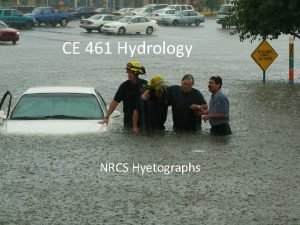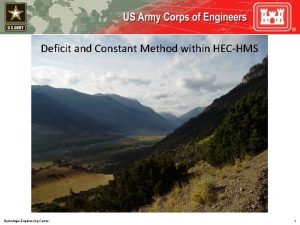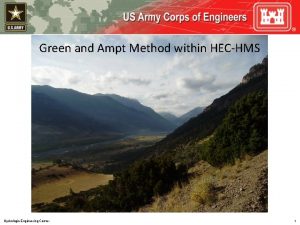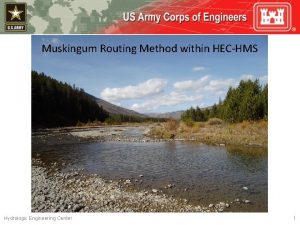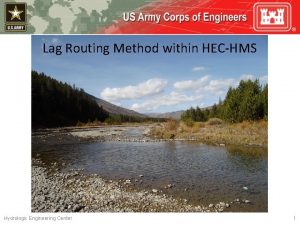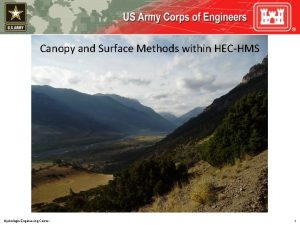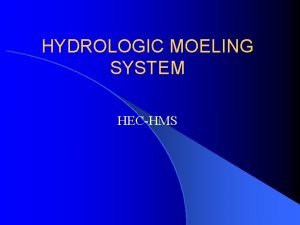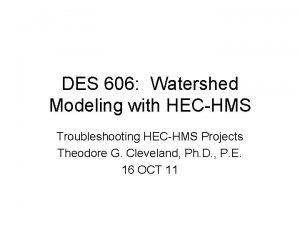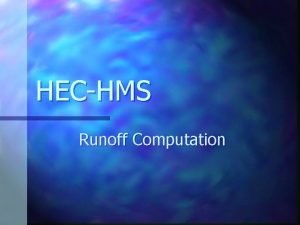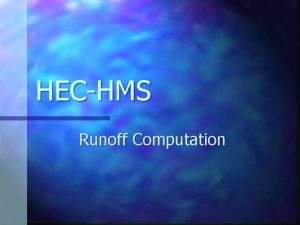Initial and Constant Method within HECHMS Hydrologic Engineering











- Slides: 11

Initial and Constant Method within HEC-HMS Hydrologic Engineering Center 1

Objectives • • • Introduce the Initial and Constant method Present an example computation Discuss common parameter estimation techniques Summarize calibration techniques Present advantages and disadvantages Hydrologic Engineering Center 2

Initial and Constant Loss Method All rainfall is lost until an initial loss is satisfied. A constant loss rate is applied to the remaining precipitation. There isn’t a way to extract infiltrated water! Hydrologic Engineering Center 3

Initial Loss Initial and Constant Loss Method Constant Loss Hydrologic Engineering Center 4

Example Hydrologic Engineering Center Time Precip (in) Loss (in) Excess (in) 0200 0. 5 0. 0 0300 0. 5 0. 25 0400 1. 0 0. 25 0. 75 0500 0. 5 0. 25 0600 0. 0 0700 0. 0 0800 0. 0 0900 0. 0 1000 0. 5 0. 25 1100 0. 5 0. 25 1200 0. 5 0. 25 1300 0. 5 0. 25 1400 0. 5 0. 25 5

Parameter Estimation – Initial Loss • Based upon antecedent conditions and soil • Did it rain a day/week/month before the simulation start? Precipitation Hydrologic Engineering Center 6

Parameter Estimation – Constant Rate • Get surficial texture from soils database – e. g. silt, loam, sandy loam, etc • Relate texture to saturated hydraulic conductivity in literature values – Engineer Manual 1110 -2 -1417 – Rawls, Brakensiek, and Miller (1983) Hydrologic Engineering Center 7

Parameter Estimation – Impervious Area • Estimate using GIS • National Land Cover Database (NLCD) – NLCD 2016 • Include large, standing water bodies Hydrologic Engineering Center 8

Calibration Techniques • Match initiation of runoff • Match observed runoff volume • Use multiple statistical metrics – Nash-Sutcliffe Efficiency – Root Mean Square Error – Percent Bias Hydrologic Engineering Center 9

Advantages • • "Mature" method that has been used successfully in thousands of studies throughout the U. S. Easy to set up and use. Parameters can be related to predominant soil textures and estimated using multiple literature sources. Method is parsimonious; it includes only a few parameters necessary to explain the variation of runoff volume. Hydrologic Engineering Center Disadvantages • • • Difficult to apply to ungaged areas due to lack of direct physical relationship of parameters and watershed properties. Method may be too simple to predict losses within event, even if it does predict total losses well. Does not allow for continuous simulation. 10

Review • Initial and Constant method is one of the simplest infiltration methods available within HEC-HMS • Parameters can be easily estimated • Primary advantage (simplicity) is also its primary disadvantage • Next lecture will focus on Deficit and Constant loss method within HEC-HMS Hydrologic Engineering Center 11
